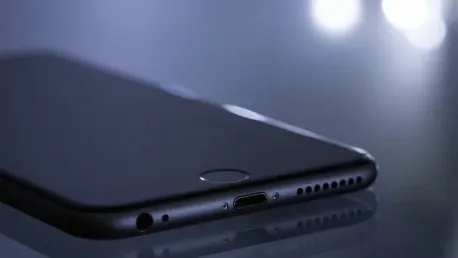Did you unbox a new iPhone for the holidays? I’m sure you want to start using it right away, but there’s still the task of moving the apps and other data from your old phone—even if it’s an Android phone—to the new one. Let’s make sure you don’t hit any snags and go about it safely. Done right, this is something you can run in the background while catching up on your latest shows. I’m here to break down the four ways to easily transfer your data from your old phone to your new iPhone, whether you’re getting started with a brand new iPhone 16 or a different model replacing your old phone.
If you’re upgrading your current phone to the latest operating system, here’s how to download iOS 18. And if it’s an iPhone 15 Pro or later, get up to speed on what Apple Intelligence offers. For more, change these eight settings first on iOS 18, explore a bunch of hidden iOS 18 features, and learn everything you can do with iPhone 16’s new Camera Button. Apple’s iPhone 16 and 16 Plus show off bolder colors and buttons.
1. Restore from iCloud Backup
During the setup process, you’ll be asked if you want to directly transfer apps and information from your old iPhone to your new one using Quick Start. This feature was first rolled out with iOS 12.4, so if it’s been several years since you’ve upgraded phones, it’ll be the first time you’ve seen the option. The easiest and quickest method to set up your new iPhone is to restore from a recent iCloud backup. As you walk through the initial setup process, tap Restore from iCloud Backup, sign in with your Apple Account (previously called Apple ID before iOS 18) and then pick the most recent backup of your old iPhone.
If the backup is more than a day or two old, take an extra few minutes to create a new backup. To do so, open the Settings app on your old phone, search for iCloud Backup in the search field at the top of the screen and then click the matching result. Click Back Up Now to update the cloud backup. Once that finishes, go back to your new iPhone and select the backup you just created as what you want to use to restore from. Your phone will then restore your settings and preferences, and you’ll be able to start using it in about 15 minutes.
It will continue downloading your installed apps in the background. Once everything is restored, you’ll need to sign back into any accounts you added to your phone, as well as go through your apps and make sure you’re still signed in. This thorough method ensures all your important information and settings are seamlessly transferred, allowing you to enjoy your new device with minimal interruption. Following these steps can save you a considerable amount of time and hassle, making your transition to a new iPhone as smooth as possible.
2. Apple Direct Transfer
If you do not have a recent iCloud backup or your Internet connection is slow, you can transfer everything from iPhone to iPhone, either wirelessly or via cable. When the Quick Start process asks for the source, choose the direct transfer option. Make sure you have both phones (preferably plugged in and charging to ensure they don’t run out of battery), a Wi-Fi connection and enough time for the process to finish—it could take over an hour. You can speed up that process by connecting both phones using a USB cable, but note that you might need an adapter if your current phone is an iPhone 14 or earlier with a Lightning port.
Apple has more details on how to make a wired transfer work. The more information you have on your phone, like photos in your camera roll, the longer it will take. When the transfer starts, the phones will show you a time estimate. Every time we’ve used this tool, that estimate has been accurate within a couple of minutes. It’s worth taking the time if you don’t use Apple’s iCloud service to back up your phone. This method provides an alternative for those who prefer or require a more direct and potentially faster transfer method.
Ensuring that both devices are well-charged and connected to a reliable Wi-Fi network is crucial for a smooth transfer. Direct transfer via cable can significantly reduce transfer times and provide a more stable connection, making it an excellent option for those with large amounts of data. Taking these precautions can help avoid potential hiccups and ensure your new iPhone is ready to use with all your data intact.
3. Use a Mac or PC
The method I use with every new iPhone is to restore from an encrypted backup using a Mac or PC. Not only does this process transfer all of your apps, settings, and preferences, but it also means you don’t have to sign into the countless apps you have on your phone. Before you can use this method, you’ll need to create an encrypted backup of your current iPhone. I know that may sound intimidating or overly complicated, but it only means you have to check an extra box and enter a password. On a Mac, you’ll use Finder to back up your old iPhone.
We outlined the steps when Apple killed iTunes. Just make sure to check the Encrypt backup box and enter a password you’ll remember when prompted. Let your Mac go to work, creating a backup file. It will let you know when it’s done. On a PC, you’ll need to use iTunes (it’s not completely dead) to create a backup. That process is explained here. Again, you’ll need to make sure the Encrypt backup box is checked and enter a password. This method, while a bit more technical, ensures comprehensive data transfer and maintains high security by encrypting sensitive information during the backup process.
To restore your new phone, open Finder or iTunes, and connect your phone to your computer. Click Trust when prompted, and then follow the prompts, selecting the backup you just created as what you want to use to restore the phone. You will need to enter the backup’s password before the process begins, so make sure you don’t forget it. Once it’s done, your new phone will be an exact copy of your old phone and you won’t have to spend any time signing into apps or random accounts. This option is particularly useful for those with lots of apps and complex settings, as it ensures everything is transferred accurately.
4. Move to iOS for Android Users
If you’re switching from an Android phone to an iPhone, Apple’s Move to iOS app makes the process straightforward. Download the app from Google Play Store on your Android device. During the iPhone setup, choose the Move Data from Android option. Open the Move to iOS app on your Android phone, follow the on-screen instructions, and enter the code displayed on your iPhone. Connect both devices to the same Wi-Fi network and ensure they are plugged in and charging.
The transfer process will begin, moving your contacts, message history, photos, videos, web bookmarks, mail accounts, and calendars to your new iPhone. This method ensures that a comprehensive array of your data is seamlessly transferred from your old Android phone to your new iPhone, providing a hassle-free transition between operating systems. Following the steps carefully will help you avoid any potential issues and get your new iPhone up and running with all your important data intact.









